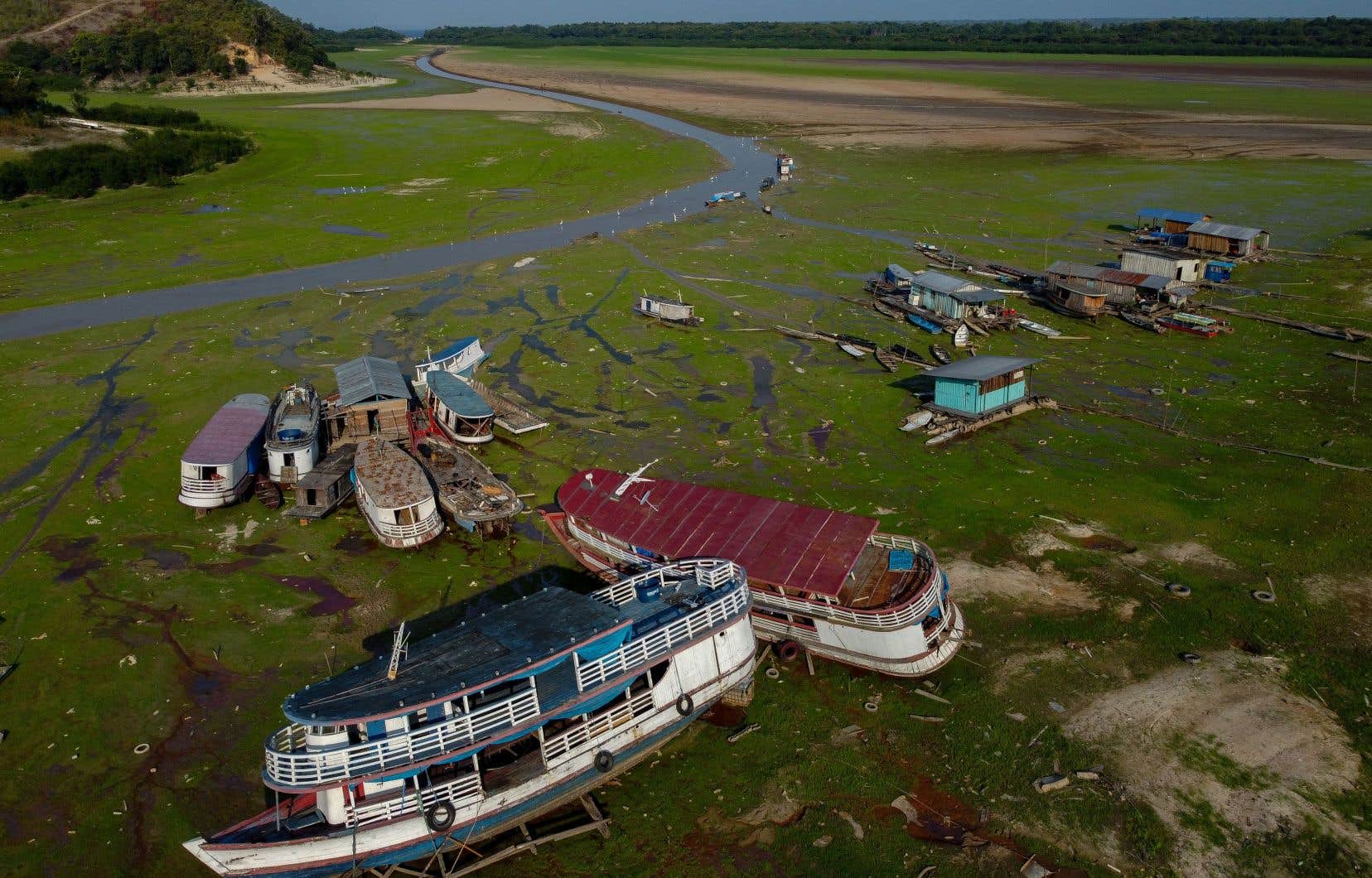Not far from the emblematic and highly touristic place where the black waters of the Rio Negro and the brown waters of the Solimoes, two of the main tributaries of the Amazon, meet, a lake has given way to a vast expanse of cracked earth.
Only a small stream remains where the Lago do Aleixo lake was. A strong symbol of the seriousness of the exceptional drought currently affecting the state of Amazonas (north) and its capital Manaus, the main metropolis of the Brazilian Amazon.
On the thin stream of water, a shirtless man painfully pushes a canoe on which he carries a refrigerator. The water barely comes up to knee level. All around, we can see the edge of the largest tropical forest on the planet.
Maria Auxiliadora da Silva, a 62-year-old retiree, tries to balance on a tree trunk lying on the ground, to avoid sinking into the mud near the stream on her way home, loaded with a heavy plastic bag. plastic.
“We have nowhere to go, so we stay here until the water comes back,” she told AFP, gazing sadly at her floating wooden house stranded in the mud. “Before, she behaved well [en flottant sur le lac]now it’s all damaged,” says this mixed-race woman with curly, graying hair tied in a bun.
All around, many boats are also blocked. A large, double-decker passenger boat meant to carry dozens of passengers is clearly leaning on its side. Its name: “Vitória de Jesus” (victory of Jesus).
Psychological effects
Graciete Abreu, a 47-year-old farmer, sells her vegetables in a market in the Colonia Santo Aleixo district, near the lake, about twenty kilometers east of downtown Manaus.
To transport his goods from his small farm on the banks of the Rio Negro, he usually only needs to sail aboard a small boat. But since the drought, she has to walk several hours to reach her destination.
“We take the boat to the place where there is still water, we drag it a little and we end up abandoning it to finish the journey on foot,” says this black woman who wears a blue cap with panels of fabric that protect his neck from the sun.
But according to her, beyond the material damage, the drought also has “psychological effects”, seeing the disfigured landscape.
This desolate spectacle is also visible at Marina do Davi, one of the main river ports of Manaus, where dozens of boats are stranded in the mud.
“I work in river transport and most of my boats are unusable,” sighs Raimundo Bernardo, a 43-year-old business manager.
On Friday, Governor Wilson Lima declared a state of emergency in 55 municipalities in Amazonas, including Manaus.
Local authorities have also taken a series of measures to help affected populations, including the distribution of 50,000 packed lunches.
On Thursday, the Minister of the Environment, Marina Silva, had already announced the sending by the federal government of “emergency” humanitarian aid in the face of “risks for the supply of food, drinking water, as well as in hygiene products and medicines.
In Amazonas, a state populated by 4 million inhabitants, including a large number of indigenous people, the extremely low level of rivers has caused the death of several thousand fish and dozens of pink Amazon dolphins.
The region is currently suffering from the El Niño phenomenon, which reduces the formation of clouds and therefore precipitation, and whose effects are becoming more and more intense, in a Brazil that is particularly “vulnerable” to climate change, according to Marina Silva.
